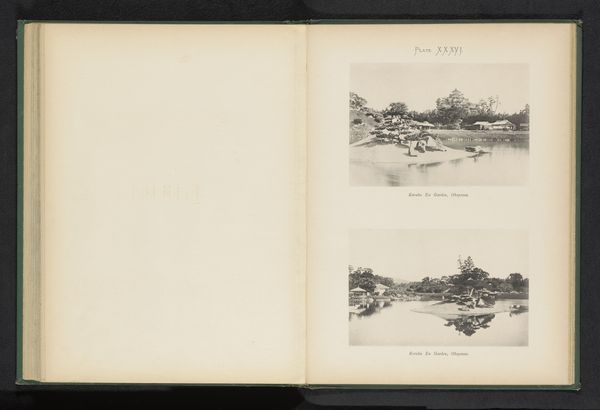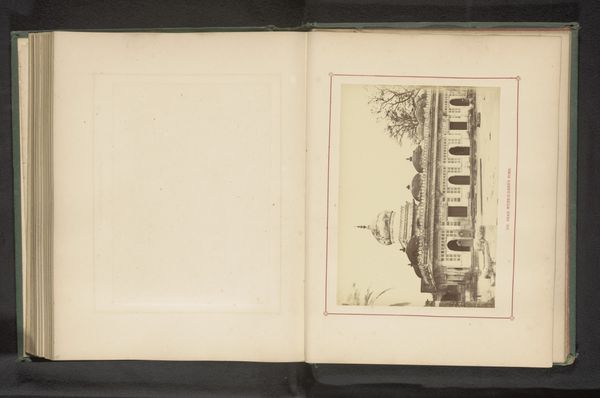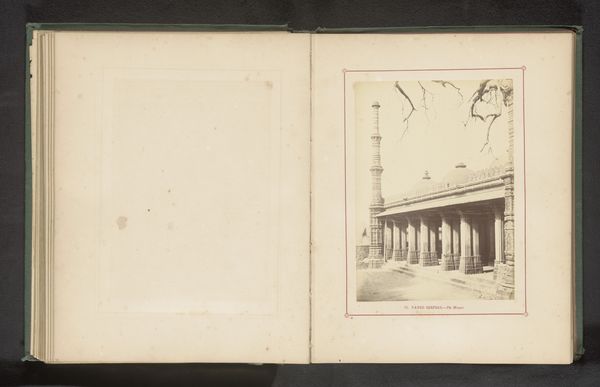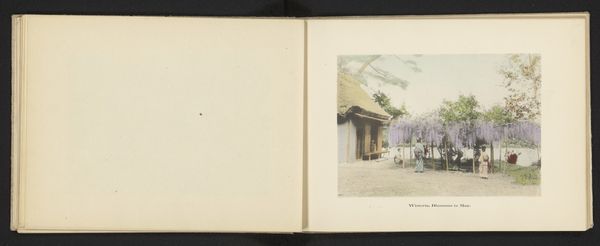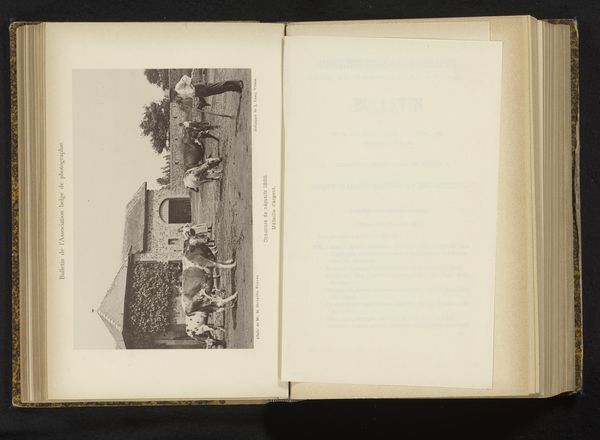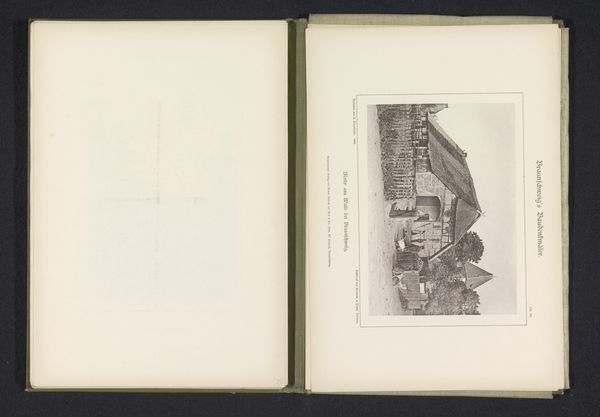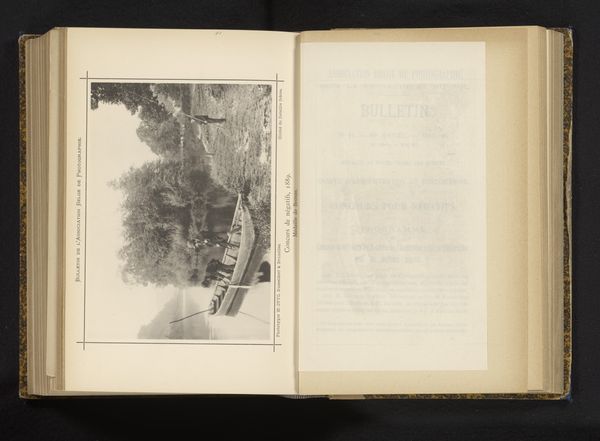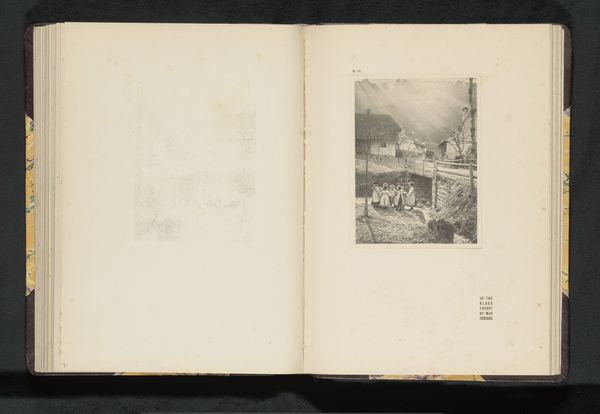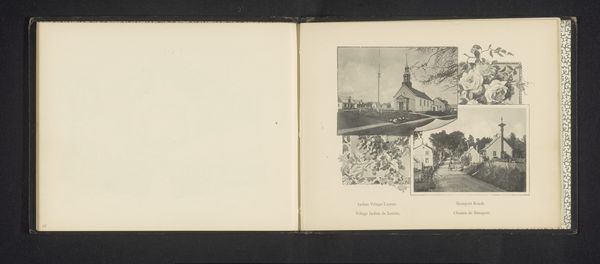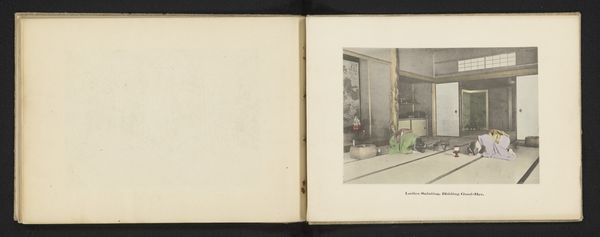
print, photography
# print
#
asian-art
#
landscape
#
photography
#
orientalism
#
cityscape
Dimensions: height 105 mm, width 151 mm
Copyright: Rijks Museum: Open Domain
Curator: This photograph, "Gezicht op een karamon bij de Nikko Toshogu in Nikko," attributed to Kōzaburō Tamamura, captures a view of a karamon, or gate, at the Nikko Toshogu Shrine. The print was created sometime between 1895 and 1905. Editor: My first impression is of intricate layering, the rooflines cascading down. The image feels strangely muted despite what must be a rich display of colors in reality. Curator: Indeed, the tonality lends an air of antiquity, despite its photographic medium. Notice how the photographer utilizes linear perspective, guiding our gaze from the foreground steps to the detailed architecture nestled amongst the trees. The rhythmic repetition of the gate's components creates visual harmony. Editor: It strikes me that these kinds of photographs were vital for disseminating imagery of Japan at a time when access was limited for Western audiences. These prints served not only as mementos for tourists, but also played a significant role in shaping Western perceptions of Japanese aesthetics and culture, participating in the phenomenon often called Orientalism. Curator: Absolutely. The craftsmanship of the gate itself speaks volumes. Each component—the roof tiles, the lattice work, the supporting columns—exhibits incredible precision and reflects a sophisticated understanding of form and function. We can interpret these architectural choices as a visual language representative of Imperial power, or indeed the Edo shogunate. Editor: And considering its intended audience and moment of production, we should note how such imagery intersects with contemporary museum collecting practices. The image immortalizes a static cultural moment, framing Japan through a tourist lens while arguably overshadowing the ongoing dynamism of Japanese society itself. Curator: Precisely. This photograph becomes a symbolic document, an intersection of artistic intention and socio-historical forces, captured and presented in a specific compositional arrangement for interpretive evaluation. Editor: Reflecting on our discussion, it seems the image functions both as an aesthetic object with certain intrinsic compositional qualities and as a cultural artifact laden with contextual weight. Curator: I agree. A nuanced examination like this is required to engage both the artistry and the history inherent in this intriguing work.
Comments
No comments
Be the first to comment and join the conversation on the ultimate creative platform.


